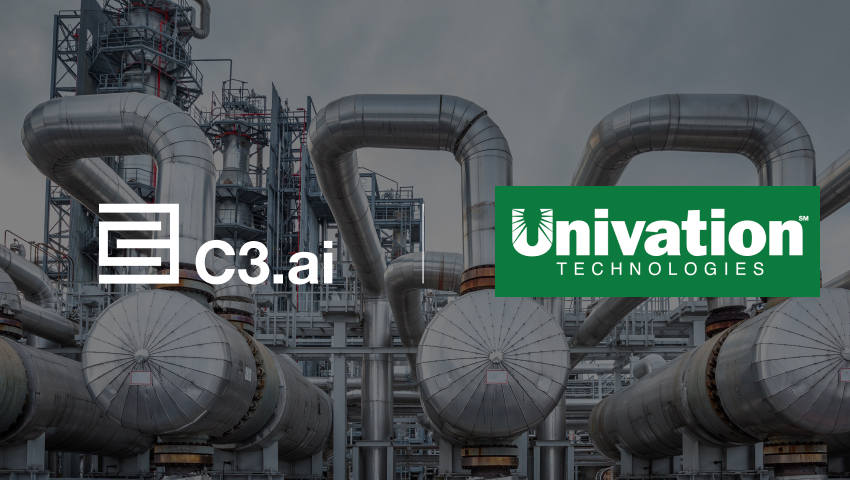A powerful once-in-a-decade winter storm in February resulted in the near total collapse of Texas’ power grid, resulting in residential and commercial areas suffering days-long blackouts, which led to at least 57 deaths and billions of dollars in property damage across the state’s 254 counties.
In addition, some Texans who did have power are facing overcharges of about $16 billion for electricity consumed during the weeklong crisis, according to a watchdog for the Electric Reliability Council of Texas (ERCOT), the quasi-governmental entity that oversees the Lone Star State’s power grid.
While debates as to the root causes of the grid’s failure are likely to go on for months if not years, some energy experts contend that a potential solution exists that could have alleviated some of the worst effects of the power shutdown – the introduction of artificial intelligence (AI) into the management of the grid.
Artificial Intelligence is loosely defined as the use of computer systems to process large volumes of data in order to perform tasks that normally require human intelligence, such as visual perception, speech recognition and decision-making. Although AI technology has been embraced by a number of other economic sectors, such as retail and insurance industries, the operators of the U.S. power grid have been slower to adopt it.
“In general, AI provides a lot of promise in empowering businesses to understand what’s happening in their environment, to get context and insight,” said Leo Simonovich, vice president and global head of industrial cyber and digital security at Siemens. “Ultimately, it’s about getting down to what’s important and having a clear playbook for making decisions.”
One way that AI could aid grid operators such as ERCOT is in the field of predictive maintenance, using data to keep track of the physical condition of all the assets on the grid, from generation sources – gas-fired power plants, renewable sources and other generation — to the transmission lines and distribution networks “all the way down to the thermostats,” said Tom Siebel founder and CEO of C3.ai, a Redwood City, California-based AI enterprise company.
Predictive maintenance could detect a potential equipment failure hours or days before an actual failure occurs, he said.
Another way in which AI could have helped alleviate the problems seen on the Texas grid in February would have been in providing improved long-term weather forecasts. This could have enabled the grid’s operators to determine in advance which units would have to go offline in order to protect the grid’s integrity, which in turn would have allowed electricity consumers more time to prepare for planned outages, said Steve Kwan, director of grid management for Beyond Limits, an AI software provider.
Artificial Intelligence technology could also help match up power supply with power demand, down to a minute-by-minute basis, which would have been especially helpful to the ERCOT regulators during the crisis.
“Texas is in a unique situation because ERCOT isn’t connected to the western and eastern grid so there are fewer opportunities to make up for a shortfall,” Kwan said.
Deregulated market
In addition, the deregulated nature of the Texas electricity market presents some unique challenges when it comes to ensuring the reliability and resiliency of the grid. Because generation companies are not compelled by regulation to build power plants to ensure there is sufficient generation capacity on the grid under emergency conditions, state regulators use power prices to incentivize merchant generators to build peaking plants necessary to add that emergency capacity.
This results in a grid that is increasingly complicated and less stable than in a regulated electricity market, said Ron Beck, marketing strategy director of AspenTech, a Bedford, Massachusetts-based asset performance management company.
“Basically, the price becomes elastic. You charge a higher price, because otherwise why would they build a peaking plant?” Beck said. “The system gets more complicated. The pricing gets more complicated.”
That’s where AI could play a role in providing grid operators with a tool to help manage the complex system during a crisis period by sorting through massive volumes of data and presenting the best options for decisive action, all at a speed that no human could achieve.
“You’ve got guys that are sitting in a command center trying to manage the grid when something begins going wrong. How can they see what’s happening when it all starts happening at once?” Beck asked.
AI in load balancing
AI could also have helped Texas regulators better balance the generation load coming from all the various generation assets on the grid, from gas- and coal-fired turbines, wind turbines, solar arrays and nuclear plants, said Colin Parris, senior vice president and chief technology officer at GE Digital.
For example, during the February freeze, some generation assets, including wind turbines and gas-fired power plants were knocked offline because of equipment freeze-ups, forcing grid operators to scramble to balance the load from all the other assets that were still running.
“It gets extremely difficult if you don’t have enough data,” said Parris. “If you have a lot of data, because you have the right sensors and AI systems, you can actually say, ‘I think I can run longer at maximum power potential.’”
All this is not to say that AI could have prevented the disastrous multiple failures experienced by the Texas power grid as the result of February’s freeze. A number of factors contributed to the near collapse of the grid, including: the failure of natural gas suppliers to winterize their pipelines, and the failure of gas-fired generators to fill out a two-page application that would have exempted their facilities from being subjected to forced power outages at the height of the disaster.
In other words, artificial intelligence is not a substitute for human intelligence.
“AI is not the panacea,” Simonovich said.
Additionally, in its current level of technological development, AI might not have been useful in predicting the sustained freeze that precipitated the Texas grid disaster, Beck said.
“In the future AI may be more intelligent, but today AI is largely based on looking at large quantities of data,” he said. “For something that hasn’t happened before or that happens extremely rarely, then it becomes harder for AI to predict it, because you don’t have historical data to say, ‘this happened three years ago.’”
Read the full article here.



